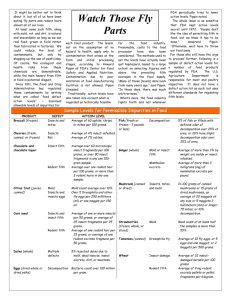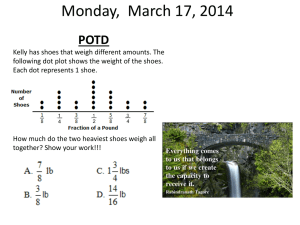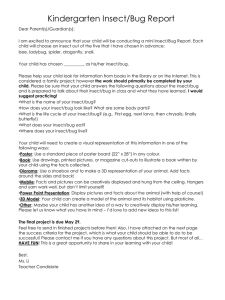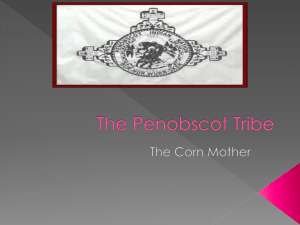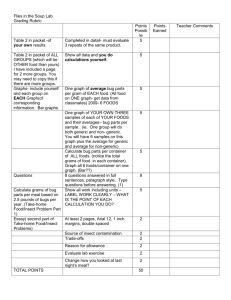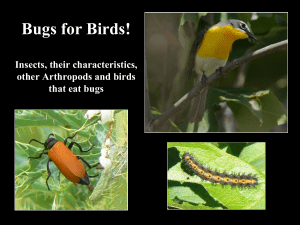The Food Defect Action Levels - Canon
advertisement
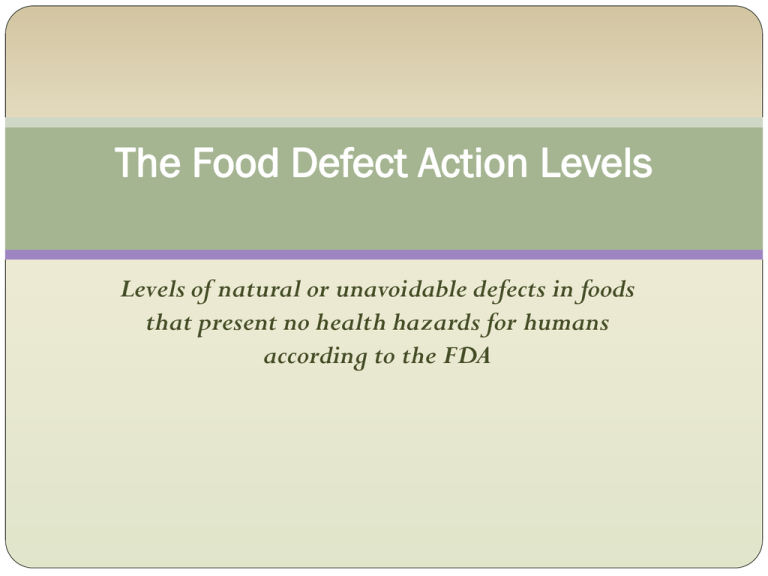
The Food Defect Action Levels Levels of natural or unavoidable defects in foods that present no health hazards for humans according to the FDA The Food Defect Handbook Handbook is created by the FDA for food processors. Handbook reflects maximum levels of natural or unavoidable defects in foods for human use that present no health hazard according to the FDA. The FDA set these action levels because it is economically impractical to grow, harvest, or process raw products that are totally free of non-hazardous, naturally occurring, unavoidable defects. Food Examples The following slides contain examples of how much of a specific contaminant can be found in foods we purchase. For comparison purposes remember that a gram weighs about as much as one small paperclip. One pound equals about 450 grams. BERRIES Average mold count is 60% or more. So almost 2/3 of berries could contain mold spores. However, they may not appear moldy. Average of 4 or more insect larvae per 500 grams. Broccoli Average of 60 or more aphids or mites per quarter pound. CHOCOLATE Average is 60 or more insect fragments per quarter pound. CORN Insect larvae (corn ear worms, corn borers) 2 or more 3mm (1 mm is about 1/16 of an inch)or longer larvae, cast skins, larval or cast skin fragments of corn ear worms or corn borer. Cannot exceed total of 12 mm (not quite an inch) in 24 pounds. MACARONI AND NOODLE PRODUCTS Average of 225 insect fragments or more per 225 grams. Average of 4.5 rodent hairs per quarter pound of pasta. OLIVES Average of 1.3 percent or more by count of olives with whole pits and/or pit fragments 2 mm or longer measured in the longest dimension PEANUT BUTTER Average of 1 or more rodent hairs per 100 grams. Average of 30 or more insect fragments per 100 grams. 5 insect fragments per tablespoon of peanut butter is acceptable by the FDA. PLUMS Average of 5% or more plums by count with rot spots larger than the area of a circle 12 mm in diameter. POTATO CHIPS Average of 6% or more pieces by weight contain rot. SESAME SEEDS Average of 5% or more seeds by weight are insect-infested or damaged. Average of 5 mg or more of rodent excrements per pound. TOMATO PRODUCTS Average of 20 or more fly eggs per 100 grams. Concluding Thoughts Can these contaminants be avoided? Are we being too squeamish about microscopic amounts of rodent hair, feces or insects in our food? How much more would food cost if we tried to enforce 100% purity in our foods? Do we need to just face the fact that our food comes from nature and nature is not perfect?

